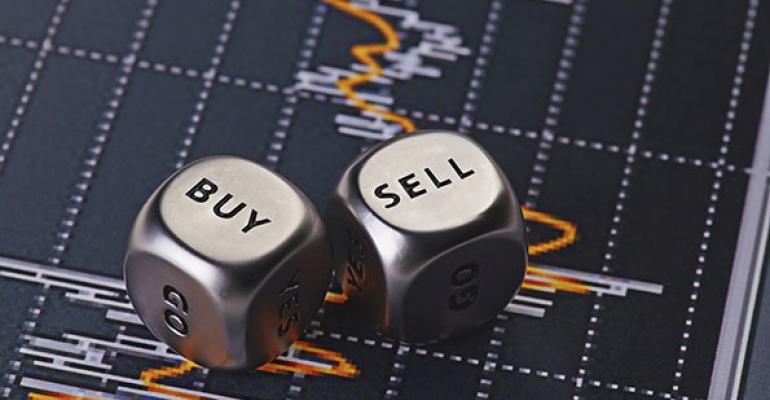By Barry Ritholtz
(Bloomberg Opinion) --Wouldn’t it be great if you could insure your portfolio against market volatility and drawdowns for only a few pennies on the dollar.
Critics of index investing seem to make that pitch every time markets become a little volatile. It goes like this: If you buy our product/newsletter/hedging strategy, you won't have to suffer through a long down period via “buy and hold.” This is alluring and pushes emotional buttons.
Those who peddle these investment strategies claim they can capture the upside while avoiding the downside of market volatility. But that is much harder than advertised. Here's why:
Anecdotal: “I know a manager running billions of dollars who has been outperforming the market for years.” Or so the story goes. Anecdotes are the refuge of scoundrels, especially in marketing. We love a good narrative, and these tall tales fill that need.
If you can show audited returns or at least report global investment performance standards (GIPS), then we can try to discern if your strategy is valid and repeatable. Anything short of that and you might as well be promising leprechauns and unicorns.
Hedging costs: “Marry a Put” exhorts one newsletter; another pushes “covered puts and calls.” No thanks. Options are an expensive way to create insurance on a portfolio. The problem is the cost. As long as the market is going higher, your puts will expire worthless. And selling put options against an existing position looks like free revenue, until that position drops precipitously. Then the person who bought your call option gets to sell you the stock at an appreciably higher price.
Buying put options for your portfolio is an expensive strategy; selling calls is a risky one. Neither is likely to improve your returns over the long run.
Trading costs: Even the rare strategies that deliver some outperformance must contend with costs. The three biggest are transaction costs, which add up over time for higher-frequency active strategies; fees, which tend to go up any time a strategy has a good year; and worst of all, short-term capital taxes, which will take a 30 percent bite out of your winners.
Getting back in: Before the Great Financial Crisis, I made a few market calls that turned out to be pretty good (all cash for institutional investors throughout 2008). On March 9, 2009, I went on Yahoo Finance TV (broadcast March 10) saying, “cover your shorts and go long.” For the next five years, I received some variation of this email: “I followed you out of equities in 2008, but I thought you were crazy in March 2009 for going back in. It's been three (or four or five) years, and I am still all cash and paralyzed. Help!”
Crash environments are always challenging, even if you managed to sidestep the collapse. In early 2009, people were doubling down on their bearish bets and calling for Dow 5,000, Dow 3,000. I have learned since then that the average person lacks the ability to stand aside from the crowd and not be influenced by the mania. It is much harder to pull the trigger on that contrary buy trade than you imagine.
Built-in forecasts: “The next recession is coming, and with it a bear market loss of at least 40 percent, if not 50 percent.” Perhaps, perhaps not. But here's what I can tell you for sure about these forecasts:
- Humans make terrible forecasters, especially about stock markets.
- Managing money toward a forecast produces awful results.
- All forecasts are marketing.
Emotional management/discipline: Even the greatest trading strategy is worthless if you lack the discipline and emotional fortitude to stay with it. Wes Gray of Alpha Architect notes that even an omniscient God would get fired by his investors during market volatility’s severe drawdowns because they lack the discipline to stick with it.
The alternatives to buy and hold involve tasks that are beyond most individual investors and many professional ones. Instead, consider a globally diversified portfolio, including asset classes that are less correlated to equities: corporate bonds, Treasury inflation-protected securities, and Treasuries. A portfolio that is 60 percent equities and 40 percent fixed income should suffer drawdowns of about 26 percent to 28 percent in markets that get cut in half, such as 1973-74 or 2008-09. If you cannot live through a 25 percent pullback in the value of your portfolio, you have no business owning stocks.
As we keep reminding you, there is no free lunch -- and that includes market timing and hedging strategies.
Barry Ritholtz is a Bloomberg Opinion columnist. He founded Ritholtz Wealth Management and was chief executive and director of equity research at FusionIQ, a quantitative research firm. He is the author of “Bailout Nation.”
To contact the author of this story: Barry Ritholtz at [email protected]
For more columns from Bloomberg View, visit bloomberg.com/view





